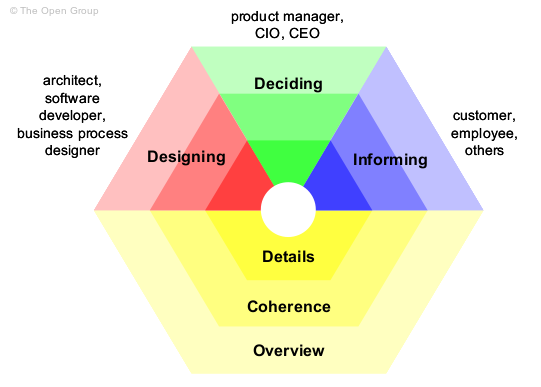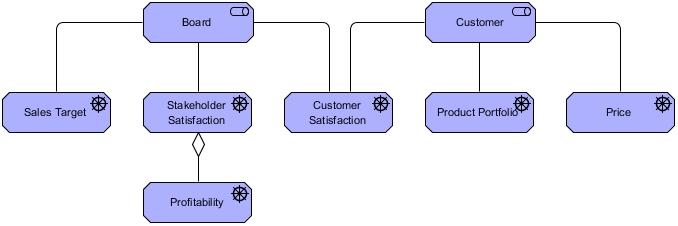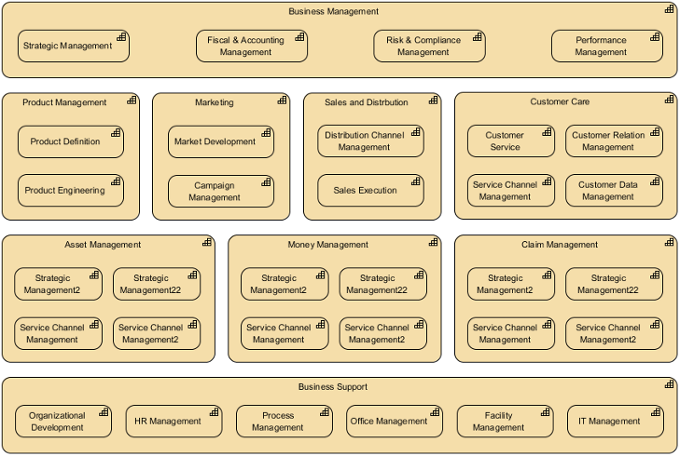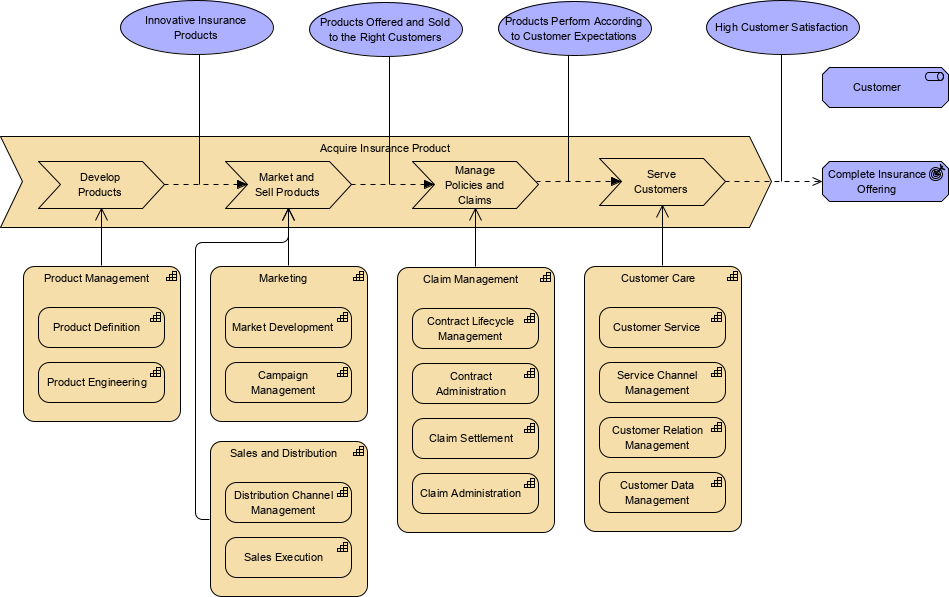Introduction
The “Deciding” viewpoints in ArchiMate are essential tools that support managerial decision-making by providing structured representations of the enterprise architecture. These viewpoints facilitate informed choices by offering clarity, visualizing relationships, supporting scenario analysis, facilitating collaboration, aligning with strategic objectives, and enabling data-driven decisions. This comprehensive guide explores how these viewpoints contribute to effective decision-making, with numerous examples to illustrate their practical applications.

1. Clarity and Focus
Tailored Information
Purpose: Deciding viewpoints present relevant architectural information that is specifically tailored to the needs of decision-makers. This focused representation helps managers understand the implications of their choices without being overwhelmed by unnecessary details.
Examples:
- Implementation and Deployment Viewpoint: In a company undergoing digital transformation, this viewpoint can outline the steps and timelines for transitioning from legacy systems to new technologies. It provides a clear roadmap for implementation, helping managers understand the sequence of activities and resource requirements.
- Goal Realization Viewpoint: In a healthcare organization, this viewpoint can illustrate how the implementation of an electronic health record (EHR) system helps achieve the goal of improving patient care. It clearly links architectural components to business objectives, providing managers with a focused view of how their decisions align with strategic goals.
- Migration Planning Viewpoint: In a merger and acquisition scenario, this viewpoint can outline the migration plan for integrating the IT systems of the acquired company into the existing infrastructure. It provides a detailed plan with timelines and dependencies, helping managers understand the complexities involved in the migration process.
2. Visualization of Relationships
Interconnected Elements
Purpose: Deciding viewpoints illustrate the relationships between various components of the architecture, enabling managers to see how different elements interact. This visibility is crucial for understanding dependencies and potential impacts of decisions across the organization.
Examples:
- Risk Analysis Viewpoint: In a financial institution, this viewpoint can identify risks associated with implementing a new trading platform, such as data security and system integration issues. It visualizes the relationships between risks and architectural components, helping managers understand the potential impacts of their decisions.
- Gap Analysis Viewpoint: In a retail company, this viewpoint can highlight the differences between the current inventory management system and the desired future state, identifying areas that need improvement. It visualizes the gaps and dependencies, providing managers with a clear view of the issues that need to be addressed.
- Capability Map Viewpoint: In a manufacturing company, this viewpoint can illustrate the capabilities required for production, such as supply chain management, quality control, and logistics. It visualizes the relationships between capabilities and supporting architectural components, helping managers understand how their decisions impact the organization’s capabilities.
3. Support for Scenario Analysis
What-if Scenarios
Purpose: By modeling different architectural scenarios, Deciding viewpoints allow managers to explore potential outcomes of various decisions. This capability supports risk assessment and helps in evaluating the consequences of different strategic options.
Examples:
- Implementation and Deployment Viewpoint: In a software development project, this viewpoint can model different deployment scenarios, such as phased rollouts or big-bang implementations. It helps managers evaluate the risks and benefits of each scenario, supporting informed decision-making.
- Goal Realization Viewpoint: In a non-profit organization, this viewpoint can model different scenarios for achieving fundraising goals, such as increasing donor engagement or expanding fundraising events. It helps managers understand the potential outcomes of each scenario, supporting strategic planning.
- Migration Planning Viewpoint: In a cloud migration project, this viewpoint can model different migration scenarios, such as lift-and-shift or refactoring. It helps managers evaluate the risks and benefits of each scenario, supporting informed decision-making.
4. Facilitation of Collaboration
Engaging Stakeholders
Purpose: Deciding viewpoints encourage collaboration among stakeholders by providing a common framework for discussion. This inclusivity ensures that diverse perspectives are considered, leading to more comprehensive decision-making.
Examples:
- Stakeholder Viewpoint: In a software development company, this viewpoint can present the architecture in a way that highlights the benefits and impacts for different stakeholders, such as developers, project managers, and end-users. It encourages collaboration by providing a common framework for discussion, ensuring that diverse perspectives are considered.

- Capability Map Viewpoint: In a government agency, this viewpoint can illustrate the capabilities required to deliver public services, such as citizen engagement, service delivery, and policy development. It encourages collaboration by providing a common framework for discussion, ensuring that diverse perspectives are considered.

- Value Stream Viewpoint: In an e-commerce company, this viewpoint can show how the order processing, inventory management, and customer service processes contribute to delivering value to customers. It encourages collaboration by providing a common framework for discussion, ensuring that diverse perspectives are considered.

5. Alignment with Strategic Objectives
Goal Orientation
Purpose: Deciding viewpoints help ensure that decisions are aligned with the organization’s strategic goals by clearly linking architectural elements to business objectives. This alignment is essential for maintaining focus on long-term success.
Examples:
- Goal Realization Viewpoint: In a telecommunications company, this viewpoint can illustrate how the implementation of a new customer relationship management (CRM) system helps achieve the goal of improving customer satisfaction. It clearly links architectural components to business objectives, providing managers with a focused view of how their decisions align with strategic goals.
- Capability Map Viewpoint: In a logistics company, this viewpoint can illustrate the capabilities required for efficient supply chain management, such as inventory optimization, transportation management, and customer service. It clearly links capabilities to business objectives, providing managers with a focused view of how their decisions align with strategic goals.
- Value Stream Viewpoint: In a healthcare organization, this viewpoint can illustrate how the patient care, billing, and insurance processes contribute to delivering value to patients. It clearly links value streams to business objectives, providing managers with a focused view of how their decisions align with strategic goals.
6. Data-Driven Decisions
Informed Choices
Purpose: By integrating data and analytics into the architectural models, Deciding viewpoints empower managers to make evidence-based decisions. This reliance on data enhances the quality of choices made and reduces reliance on intuition alone.
Examples:
- Risk Analysis Viewpoint: In a manufacturing company, this viewpoint can integrate data on equipment failures, production delays, and supply chain disruptions to assess risks associated with implementing a new production line. It empowers managers to make evidence-based decisions, reducing reliance on intuition alone.
- Gap Analysis Viewpoint: In a retail company, this viewpoint can integrate data on customer satisfaction, sales performance, and inventory turnover to identify gaps between the current and target architectures. It empowers managers to make evidence-based decisions, reducing reliance on intuition alone.
- Performance Viewpoint: In an e-commerce platform, this viewpoint can integrate data on website traffic, order processing times, and customer feedback to optimize performance. It empowers managers to make evidence-based decisions, reducing reliance on intuition alone.
Conclusion
In summary, the “Deciding” viewpoints in ArchiMate play a vital role in supporting managerial decision-making by providing clarity, facilitating collaboration, and ensuring alignment with strategic objectives. By leveraging these structured representations, managers can make informed and effective decisions that drive organizational success. These viewpoints offer a comprehensive approach to decision-making, ensuring that both technical and non-technical stakeholders can understand and contribute to the architectural design process, leading to better alignment with organizational goals and improved outcomes.
ArchiMate Viewpoint References
-
Full ArchiMate Viewpoints Guide (Examples Included)
- URL: Full ArchiMate Viewpoints Guide (Examples Included)
- Description: This guide provides a comprehensive overview of ArchiMate viewpoints, including 23 official example viewpoints with clear diagram examples and explanations. It is written by a certified ArchiMate tool vendor and supports all ArchiMate 3 vocabulary, notation, syntax, and semantics11.
-
ArchiMate Viewpoint Guide – Information Structure Viewpoint
- URL: ArchiMate Viewpoint Guide – Information Structure Viewpoint
- Description: This guide explains the Information Structure Viewpoint in detail, providing a table that describes the viewpoint and a figure showing an ArchiMate diagram created under this viewpoint. It also includes instructions on how to open the viewpoint tab in Visual Paradigm12.
-
ArchiMate Viewpoint: Technology Viewpoint – Visual Paradigm
- URL: ArchiMate Viewpoint: Technology Viewpoint – Visual Paradigm
- Description: This article describes the Technology Viewpoint in detail and provides a figure showing an ArchiMate diagram created under this viewpoint. It also includes instructions on how to select the Technology Viewpoint in Visual Paradigm13.
-
Unlocking the Power of ArchiMate Viewpoints in Enterprise Architecture: Enhancing Clarity, Relevance, and Alignment – Visual Paradigm Guides
- URL: Unlocking the Power of ArchiMate Viewpoints in Enterprise Architecture: Enhancing Clarity, Relevance, and Alignment – Visual Paradigm Guides
- Description: This guide explains the importance of ArchiMate viewpoints in enterprise architecture, highlighting how they enhance clarity, relevance, and alignment. It discusses the predefined perspectives or templates that ArchiMate viewpoints provide and how they address specific stakeholder concerns14.
-
Visual Paradigm – Full ArchiMate Viewpoints Guide (Examples Included) – ArchiMate Resources for FREE
- URL: Visual Paradigm – Full ArchiMate Viewpoints Guide (Examples Included) – ArchiMate Resources for FREE
- Description: This guide covers all 23 ArchiMate viewpoints with clear descriptions and diagram examples for each. It emphasizes the importance of viewpoints in ArchiMate and how they help model specific aspects of an enterprise architecture15.
-
Understanding ArchiMate Viewpoints Mechanism
- URL: Understanding ArchiMate Viewpoints Mechanism
- Description: This guide explains the ArchiMate viewpoints mechanism, including how to draw an ArchiMate viewpoint diagram step-by-step and how to define your own viewpoint. It also discusses the importance of viewpoints in addressing stakeholder concerns16.
-
ArchiMate Viewpoint: Stakeholder Viewpoint – Visual Paradigm
- URL: ArchiMate Viewpoint: Stakeholder Viewpoint – Visual Paradigm
- Description: This article describes the Stakeholder Viewpoint in detail and provides a figure showing an ArchiMate diagram created under this viewpoint. It also includes instructions on how to select the Stakeholder Viewpoint in Visual Paradigm17.
-
ArchiMate Viewpoint Guide – Project Viewpoint
- URL: ArchiMate Viewpoint Guide – Project Viewpoint
- Description: This guide explains the Project Viewpoint in detail, providing a table that describes the viewpoint and a figure showing an ArchiMate diagram created under this viewpoint. It also includes instructions on how to open the viewpoint tab in Visual Paradigm18.
-
ArchiMate Viewpoint: Project Viewpoint – Visual Paradigm
- URL: ArchiMate Viewpoint: Project Viewpoint – Visual Paradigm
- Description: This article describes the Project Viewpoint in detail and provides a figure showing an ArchiMate diagram created under this viewpoint. It also includes instructions on how to select the Project Viewpoint in Visual Paradigm19.
-
ArchiMate Viewpoint: Goal Realization Viewpoint – Visual Paradigm
- URL: ArchiMate Viewpoint: Goal Realization Viewpoint – Visual Paradigm
- Description: This article describes the Goal Realization Viewpoint in detail and provides a figure showing an ArchiMate diagram created under this viewpoint. It also includes instructions on how to select the Goal Realization Viewpoint in Visual Paradigm20.
These references provide a comprehensive overview of ArchiMate viewpoints, their importance, and how to use them effectively in enterprise architecture modeling.